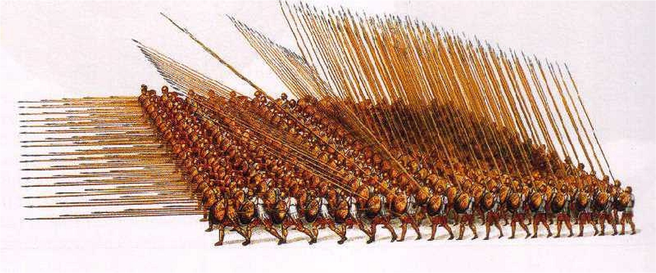
The object of the game is to gain the most victory points by placing and capturing cubes on a vaguely Ancient Greek battlefield. The game ends when a player has no cubes left to place on the board. A single cube on the board is a syntagma, multiple cubes of the same player may combine as a phalanx or a juggernaut.
The board is a 9 x 9 grid of squares, in a 3 x 3 grid of smaller grids of 3 x 3 squares called sectors, like this. Each small square can contain nothing or one cube or part of a juggernaut.
Initially the central sector contains 9 neutral white cubes and all others are empty. There is a setup phase of each player putting four cubes in any one empty corner sector. The player with other players in both their adjacent corners is then first Archon.
There is a deck of cards from the Manhattan boardgame, each showing one of the 9 sectors.
In each turn the Archon draws 3 cards and chooses 1 to keep (face down) and 1 to give to each other player (face up). The other two players then (in clockwise order) choose to accept their card or reject it. If one player chooses reject the Archon may also reject their own card. If both other players reject their cards, the Archon must reject their own card.
Reject: Rejecting a card allows either moving any phalanx or syntagma they control, or making a prisoner exchange. Players play their cards or rejection options starting with the Archon, then the others clockwise.
If both players accept their cards, the Archon remains Archon for next turn as well. Otherwise, the Archon position for next turn passes to the first player to reject their card.
Prisoner exchange allows a player to return one captured player cube to that player's supply and take a white cube prisoner from the white supply instead.
Cards allow a juggernaut move or placing a cube anywhere empty in the sector shown on the card, oriented to be upright from the archon's point of view. If there are no empty squares in that sector, the player can instead place a cube in any empty square.
Placing: A cube can be placed in any empty square in the sector shown on the card. It can then be moved either alone as a syntagma or with others forming any one phalanx with it.
Phalanx: A phalanx is a group of cubes of the same player arranged in a rectangle or a parallelogram in the form of a rectangle skewed by 45 degrees (i.e. each successive line of a rectangle moved one more square aside). Note that a cube can be part of many different phalanxes at the same time.
Syntagma: A single cube is the special case unit syntagma rather than just a small phalanx, and when moved can move one square in any direction once or twice. It has a strength of 1 so can be captured by a phalanx stronger than 1, and cannot itself capture anything.
Juggernaut: A juggernaut occupies 4 squares in a 2 x 2 shape, and can be made from four cubes in a 2 x 2 square, using a card for a sector including at least one of the cubes. It can be converted back to four cubes in the same circumstances. A juggernaut move captures enemy cubes with a strength of one in the direction of movement, and captures the player's own cubes of any strength, which each then have a placing action using the same card that moved the juggernaut.
A phalanx can move one square in the direction of either of its axes if all its lines on that axis are the same length and longer than 1. A phalanx has a strength of the length of its lines in the moving axis. Hostile cubes in its path are captured unless they are part of a phalanx at least as strong in the axis of movement. Friendly cubes in its path block its movement.
A juggernaut can move one square in the direction according to its card, with centre meaning any direction. A juggernaut cannot itself be captured in whole or part.
Captured cubes are victory points for the capturer, counted separately from each opponent, weighted at 1 x the largest total + 2 x the second largest + 3 times the third largest. A player's score is this sum plus 2 x the number of their own cubes on the board, counting a juggernaut as 4 cubes.
